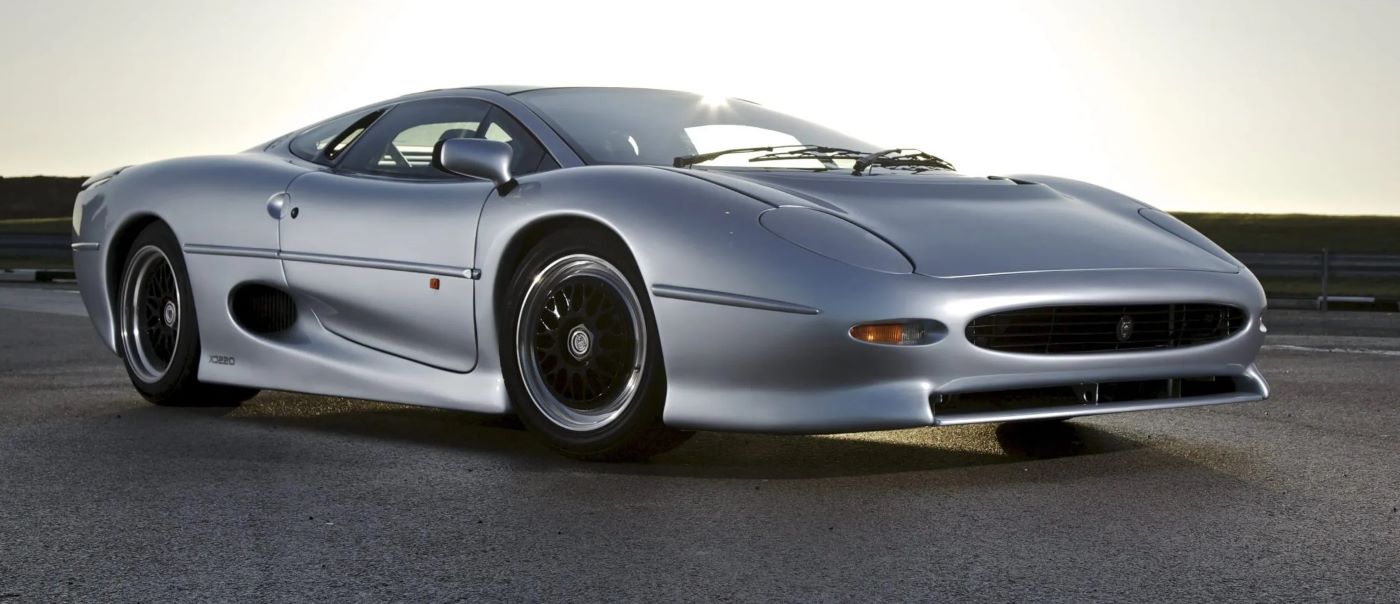
The Jaguar XJ220, a two-seat supercar with 282 produced by Jaguar from 1992 until 1994. Once the fastest production car in the world. The XJ220 recorded a top speed of 212.3 mph (341.7 km/h) during testing by Jaguar at the Nardo test track in Italy. The concept model was powered by 500 hp; 6.2 L V12 Rear mid-engine, all-wheel-drive. The production version was powered by a 3.5 L, twin-turbocharged Jaguar JRV-6 V6 with 542 hp; 405 kW (550 PS) 475 lb⋅ft (644 N⋅m). Both car had a 5-speed manual transmission.
While most cars are carefully planned for production and have the full backing of the manufacturer, the Jaguar XJ220 was first built in the spare time of Jaguar engineers without Jaguar’s knowledge. Jim Randle, Jaguar’s chief engineer at the time, wanted to create the ultimate supercar and convinced several of the other engineers at Jaguar to help him make his dream reality. Working on Saturday nights, the small group of engineers slowly began creating the “ultimate supercar”. Eventually, Jaguar found out about the car and ended up helping the engineers build the first prototype.
The first XJ220 concept car made its debut at the 1988 Birmingham Motor Show and was received with overwhelming enthusiasm. The reaction from auto enthusiasts around the world was so great that Jaguar decided to build a production version of the car. The world economy at the time was in full swing and Jaguar could afford to build a supercar like the XJ220.
While the XJ220 concept featured a V12 engine, Jaguar decided to instead use a racing V6 displacing 3.5 liters for the production car. The V12 was too bulky and the lower displacement was offset by using twin Garrett T3 turbochargers, four camshafts, and four valves per cylinder. The stats of the engine speak for themselves: 542 hp @ 6500 rpm and 473 lb-ft torque @ 5000 rpm. All of this power was put to the wheels through a 5-speed transaxle, and massive tires (255/45ZR17 front / 345/35ZR-18 rear) put all the power to the ground and helped maintain traction when accelerating, cornering, and braking. 13-inch front rotors and 11.8-inch rotors in the rear helped stop the car in supercar-like fashion.
The body of the prototype XJ220 was built of aluminum and the production version retained the use of this material. The bonded-aluminum honeycomb body panels formed one of the most beautiful bodies to cover a chassis. The curb weight stayed at a low 3025 lbs because of the aluminum body and lighter engine. Also because of the V6 engine, the length of the car was reduced by an astounding ten inches from the prototype, but the car remained extremely wide at 6 feet, 6 inches.
Acceleration times included a 3.5 second sprint to 60 mph and 100 mph was reached in only 8 seconds. The 1/4 mile could be done in just under 12 seconds at over 120 mph. Top speed, like the name of the car suggests, is just under 220 mph. In 1991 Andy Wallace tested the XJ220 at an incredible 212.3 mph in Fort Stockton, Texas. This made it the fastest production car of its time. It’s record stood until Gordon Murray’s McLaren F1 shattered the top speed record with its 240 mph run.
Jaguar intended the XJ220 to be a very limited edition car, originally planned producing only 350 cars. However, the production run turned out to be too exclusive as Jaguar had trouble selling all of the cars. With the crash of the supercar economy in the early 1990’s, the switch from the V12 to the twin-turbo V6, and the enormous $678,000 price tag, several buyers tried to pull out of their orders. Legal proceedings ensued as Jaguar demanded that buyers stand by their promise to buy the car.
Total Production numbers reported. (275) cars had been originally built by Jaguar. In 1994, another (6) cars built in a joint venture by Jaguar and Tom Walkinshaw Racing (TWR). The joint venture developed additional six road cars called the XJ220-S (TWR) assembly in Bloxham, Oxfordshire United Kingdom. The XJ220-S, featured a one-piece carbon-fibre-reinforced polymer front and rear bodywork; the engine was tuned to 700 PS (515 kW; 690 hp). The XJ220-S models did away with the hidden headlamps of the original and instead opted for perspex covered lights.
Final Production: 1991–1994 (281) XJ220 produced
| Specifications | ||||||||||||||||||||||||
|
XJ220 Gallery
Jaguar XJ220 20th Anniversary
The XJ220 remains the fastest Jaguar ever produced and when launched in 1992 and, at 213mph, had the highest maximum speed of any production car. Constructed using advanced aluminium honeycomb, the car was immensely strong and, despite its size, weighed just 1,470 kg.
Originally conceived as a concept car, the XJ220 debuted at the 1988 British Motor Show. Designed by Keith Helfet, the car was signed off for production in December 1989 with TWR selected as the partner for the project.
Powered by a 3.5-litre, twin turbo V6, the XJ220 channelled its drive through the 18-inch Speedline rear wheels shod in specially developed 345/35 Bridgestone Expedia tyres via a five-speed gearbox and an AP Racing twin-plate clutch. The XJ220 developed 550 PS and 475 lbs ft of torque to allow it to accelerate to 60mph in under four seconds. Braking was supplied by a set of AP Racing discs and four pot callipers.
Built by hand in an all-new factory in Bloxham, Oxfordshire, prototype 001 was completed in 1990 while car 002 achieved 186 mph at Bruntingthorpe in September of the same year. The first customer car was completed in June 1992 with a retail price of £470,000.
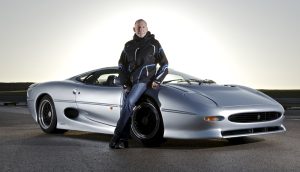
The silver car in attendance at the recent Jaguar Experience Day held at the Heritage Motor Centre, Gaydon is chassis 004, one of 10 pre-production vehicles. This example was used for extensive tyre and high speed testing at Fort Stockton, Texas, in 1991. Andy Wallace achieved a maximum speed of 213 mph in the car during the testing process.
Once these duties were completed the car was converted to race specification and was campaigned by Justin Law in the British GT Cup. On being retired from racing it was returned to its standard, road-going specification.
The yellow car is an XJ220 S – chassis ‘220-803’. This is the very first XJ220 S, built using spare parts from the Le Mans cars, including single-piece carbon fibre front and rear clamshells, revised springs and dampers and a claimed 700 PS. The luxurious interior of the road car was dropped in favour of Kevlar bucket seats and pared down, carbon trim.
The car was unveiled at the Autosport Show in 1993.


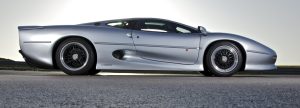
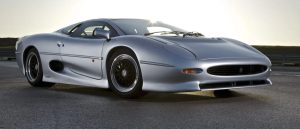
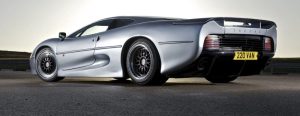
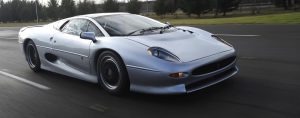
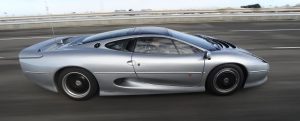

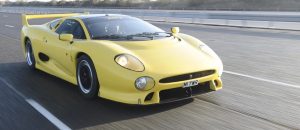

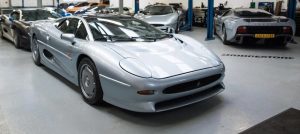
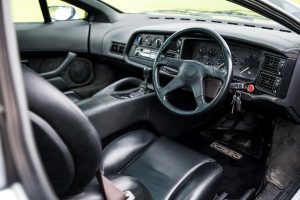

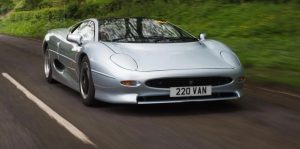
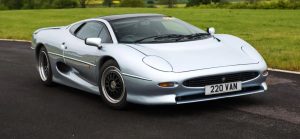
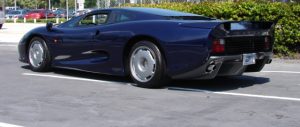



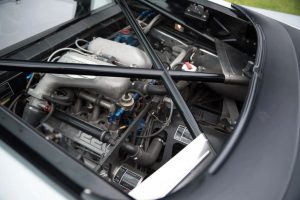
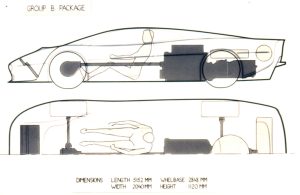
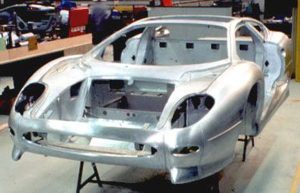


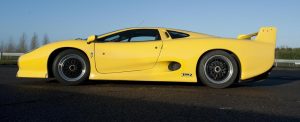



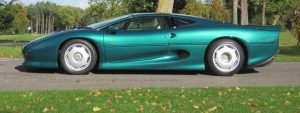
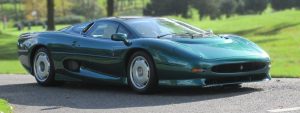
You must be logged in to post a comment.